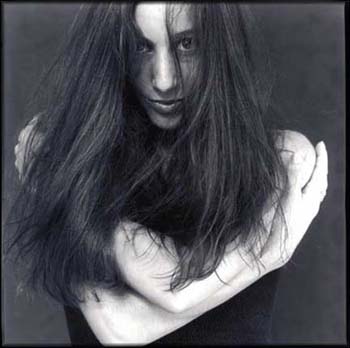
TIMES THEATRE TRIBUTES--2002
Greater Cleveland is blessed with a vital theatre scene. Unfortunately, the local performers, directors and technicians often get little acknowledgment. It is the purpose of the TIMES THEATRE TRIBUTES to recognize theatrical experiences that, in the mind of this reviewer, were excellent.
No attempt is made to name the best in each classification. Actors were not separated by gender or leading or supporting roles. It is also recognized that I did not see all of the productions in the area, so only shows performed in 2002 that I reviewed were considered. Selections are limited to locally produced performances, so none of the professional touring shows are recognized, though actors, directors and technicians who were imported by local theatres were considered.
Thanks to the following for making the theatre scene in the Cleveland area vital and exciting.
A Times Theatre Tribute 2002 for an Outstanding Production to:
AVENUE X, Cain Park
BLUE SKY TRANSMISSION: A TIBETAN BOOK OF THE DEAD, Cleveland Public Theatre
LOVE, LANGSTON, Great Lakes Theatre Festival
MAN OF LAMANCHA, Halle Theatre
MOON FOR THE MISBEGOTTEN, Great Lakes Theatre Festival
MUCH ADO ABOUT NOTHING, Great Lakes Theatre Festival
PARADE, Beck Center
SMOKEY JOE’S CAFE , Beck Center
THE LATE HENRY MOSS, Dobama
THE WILL ROGERS FOLLIES: A LIFE IN REVUE, Berea Summer Theatre
THREE IN THE BACK, TWO IN THE HEAD, Dobama
WHO’S AFRAID OF VIRGINIA WOOLF, Actors’ Summit
A Times Theatre Tribute 2002 for Outstanding Acting to:
Miche Braden, LOVE, LANGSTON, Great Lakes Theatre Festival
Bernie Capenari, THREE IN THE BACK, TWO IN THE HEAD, Dobama
Donald Clark, ONE FLEW OVER THE CUKOO’S NEST, Porthouse Theatre
Derrick Cobey, AVENUE X, Cain Park
Yolanda Davis, CONSTANT STAR, Dobama
Vincent Dowling, MOON FOR THE MISBEGOTTEN, Great Lakes Theatre Festival
Paula Duesing, WHO’S AFRAID OF VIRGINIA WOOLF, Actors’ Summit
Robert Ellis, THE LATE HENRY MOSS, Dobama
Susan Ericksen, BRIGHT IDEAS, Cleveland Play House
Annie Fitzpatrick,ONE FLEW OVER THE CUKOO’S NEST, Porthouse Theatre
Amanda Folino, WILL ROGERS FOLLIES: A LIFE IN REVUE, Berea Summer Theatre
Tom Fulton, MAN OF LAMANCHA, Halle Theatre
Tom Fulton, WHO’S AFRAID OF VIRGINIA WOOLF, Actors’ Summit
Keith Gerchak, THE MELODY LINGERS ON, Berea Summer Theatre
Keith Gerchak, Parade, Beck Center
Seth Gordon, THREE IN THE BACK, TWO IN THE HEAD, Dobama
Alltrinna Grayson, SMOKEY JOE’S CAFE, Beck Center
Thomasina Gross,ONCE ON THIS ISLAND ,Porthouse Theatre
Ann Guibert, WAVERLY GALLERY, Cleveland Play House
Robert Hawkes, THREE IN THE BACK, TWO IN THE HEAD, Dobama
Providence Hollander, THE LEADING LEADIES OF BEREA SUMMER THEATRE, BST
Anna Kitral, THE INTERVIEW, Halle Theatre
Mary Klaehn. BRIGADOON, Porthouse Theatre
Marty Lodge, McMurphy, ONE FLEW OVER THE CUKOO’S NEST, Porthouse Theatre
Andrew May, THE INFINITE REGRESS OF HUMAN VANITY, Cleveland Play House
Andrew May, BRIGHT IDEAS, Cleveland Play House
Joyce M. Meadows, PROPOSALS, Beck
Kate Mulgrew, TEA AT FIVE, Cleveland Play House
Frederick Owens, LOVE, LANGSTON, Great Lakes Theatre Festival
Gary Walker, AVENUE X, Cain Park
Tyson Postma, THE LATE HENRY MOSS, Dobama
Kyle Primous, PARADE, Beck Center
Trinidad Rosado, SMOKEY JOE’S CAFE, Beck Center
Dorothy Silver, THE MAI, Dobama
Nan Wray. HOMEBODY/KABUL, Dobama
Jean Karzour, HOMEBODY/KABUL, Dobama
Ensemble cast: Lisa Black, Tracy Broyles, Kishiko Hasegawa, Holly Holsinger, Brett
Keyser, Amy Kristina, Karin Randoja, Sophia Skiles, Rebecca Spencer, and Chi-wang Yang, BLUE SKY TRANSMISSION: A TIBETAN BOOK OF THE DEAD, Cleveland Public Theatre
A Times Theatre Tribute 2002 for Outstanding Directing to:
Drew Barr, MUCH ADO ABOUT NOTHING, Great Lakes Theatre Festival
Loni Berry, adaptation and directing, LOVE, LANGSTON, Great Lakes Theatre Festival
Russ Borski, THE LATE HENRY MOSS, Dobama
Victoria Bussert, AVENUE X, Cain Park
Raymond Bobgan, BLUE SKY TRANSMISSION: A TIBETAN BOOK OF THE DEAD ,
Cleveland Public Theatre
Martin Cespedes, SMOKEY JOE’S, choreographer/director, Beck Center
Scott Spence, PARADE, Beck Center
Fred Sternfeld, MAN OF LAMANCHA, Halle Theatre
Sue Ott Rowlands, ONE FLEW OVER THE CUKOO’S NEST, Porthouse Theatre
Lora Workman,THE WILL ROGERS FOLLIES: A LIFE IN REVUE, BST
A Times Theatre Tribute 2002 for Outstanding Choreography to:
Eric van Baars, ONCE ON THIS ISLAND, Porthouse Theatre
Martin Cespedes, MAN OF LAMANCHA, Halle Theatre
Jimmy Helms, THE LATE HENRY MOSS, Dobama, fight choreography
A Times Theatre Tribute 2002 for Outstanding Technical Achievement to:
John Ezell, set design, MOON FOR THE MISBEGOTTEN, Great Lakes Theatre Festival
Michael Guy-James, set, BLUE SKY TRANSMISSION: A TIBETAN BOOK OF THE DEAD , Cleveland Public Theatre
Gina Leone’s lighting THE WILL ROGERS FOLLIES: A LIFE IN REVUE, Berea Summer Theatre
Don McBride, set design, PROPOSALS, Beck Center
Ron Newell, set design, THE WILL ROGERS FOLLIES: A LIFE IN REVUE, Berea Summer Theatre
Robin Ruth, costumes, ONCE ON THIS ISLAND, Porthouse Theatre
Robert Stegmiller, set design, OVER THE RIVER AND THROUGH THE WOODS, Actors’ Summit
Jeffrey Smart, costumes, THE WILL ROGERS FOLLIES: A LIFE IN REVUE, Berea Summer Theatre
A Times Theatre Tribute 2002 for Outstanding Musical Direction in a Musical
Marcella McElroy Caffie, THE AMEN CORNER, Cleveland Play House
Nancy Gantose-Maier, AVENUE X, Cain Park
Larry Hartzell, MAN OF LAMANCHA, Halle
Nancy Maier, ONCE ON THIS ISLAND, Porthouse Theatre
Danny McElroy, THE AMEN CORNER, Cleveland Play House
Charles Eversole, WILL ROGERS FOLLIES: A LIFE IN REVUE, Berea Summer Theatre
David Williams, SMOKEY JOE’S CAFE, Beck Center
Larry Goodpaster, PARADE, Beck Center
A Times Theatre Tribute 2002 for service to the theatre
ARACA, major contribution to Broadway theatre by a production organization with a Cleveland connection
Don Bianchi, Dobama, lifetime of achievement in Cleveland theatre
Hamlim El-Dabh, music composition, BLUE SKY TRANSMISSION: A TIBETAN BOOK OF THE DEAD , Cleveland Public Theatre
Fay Sholiton, author, THE INTERVIEW, Halle Theatre
TONY N’ TINA’S WEDDING, longest running show in Cleveland theatrical history






























